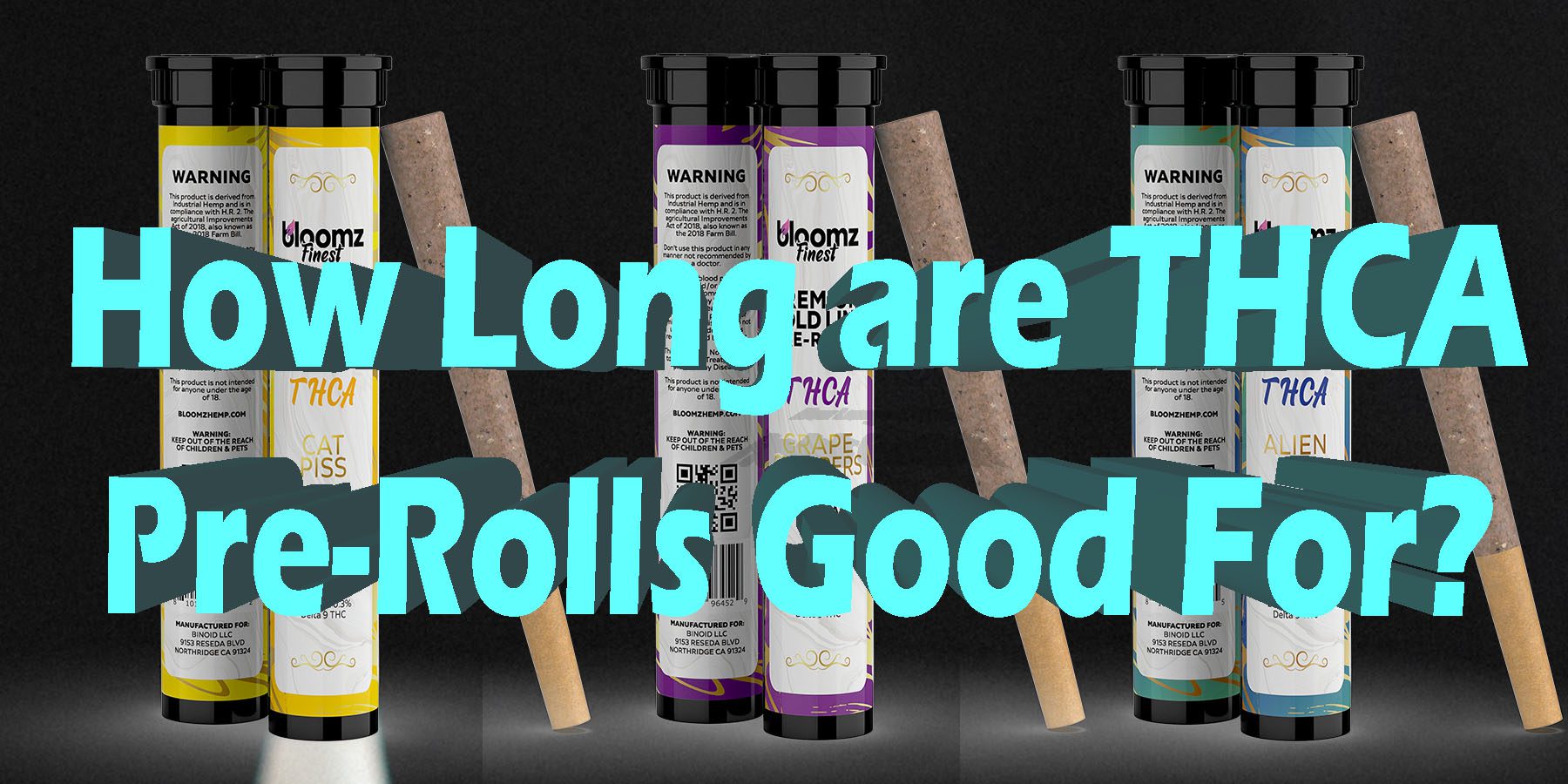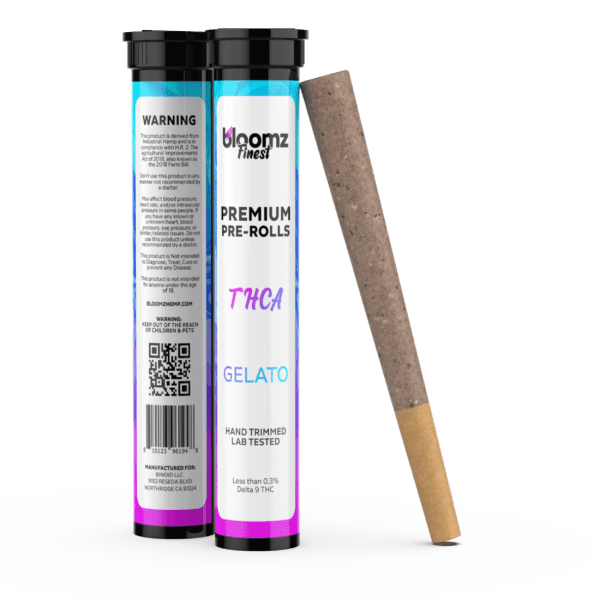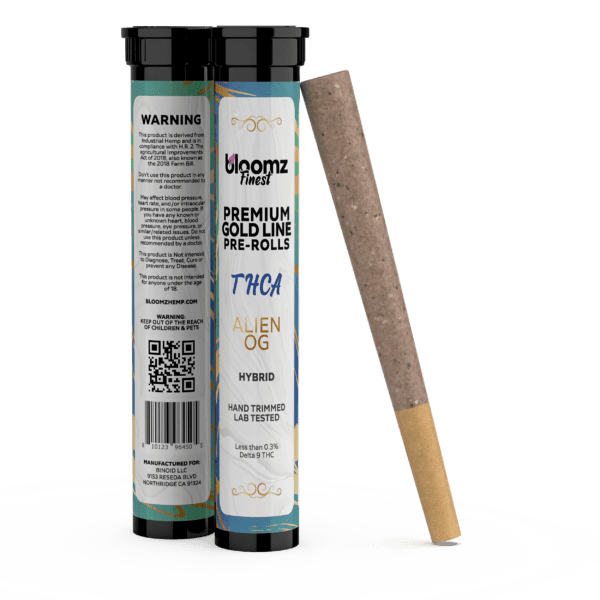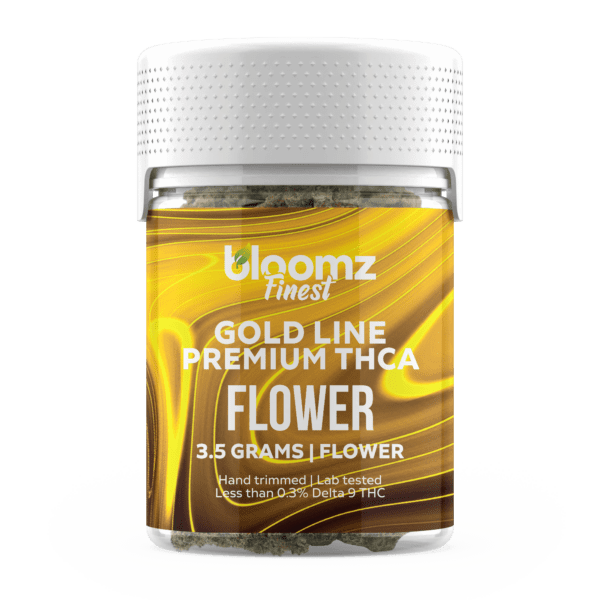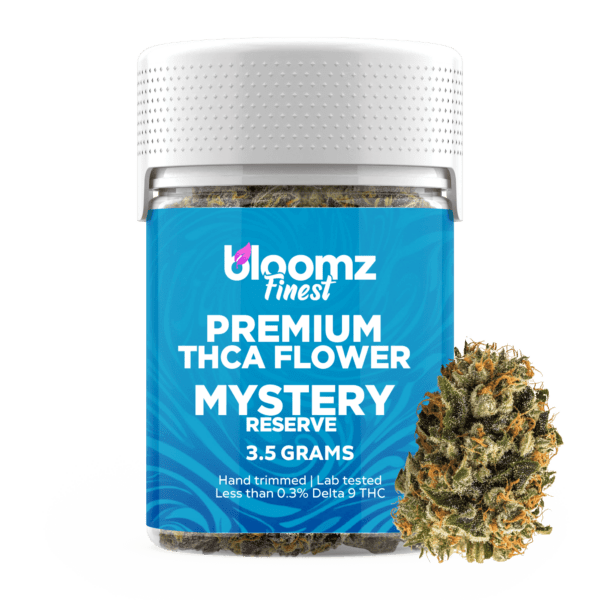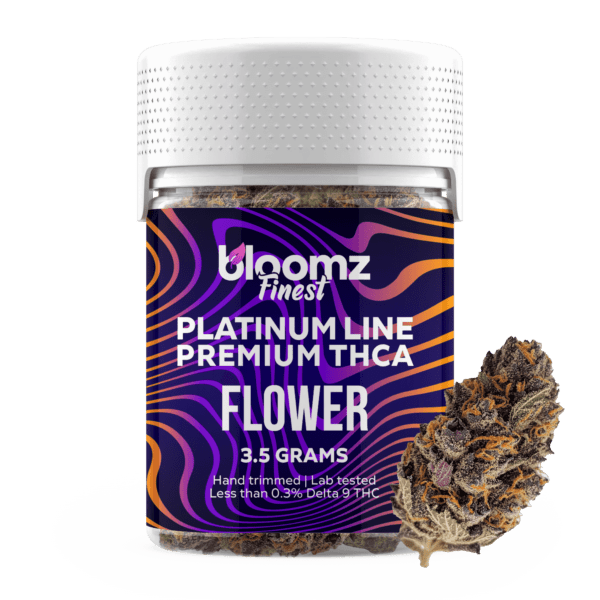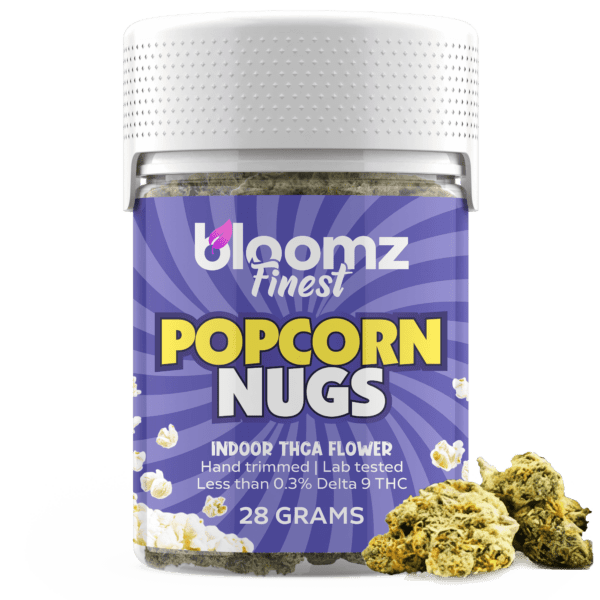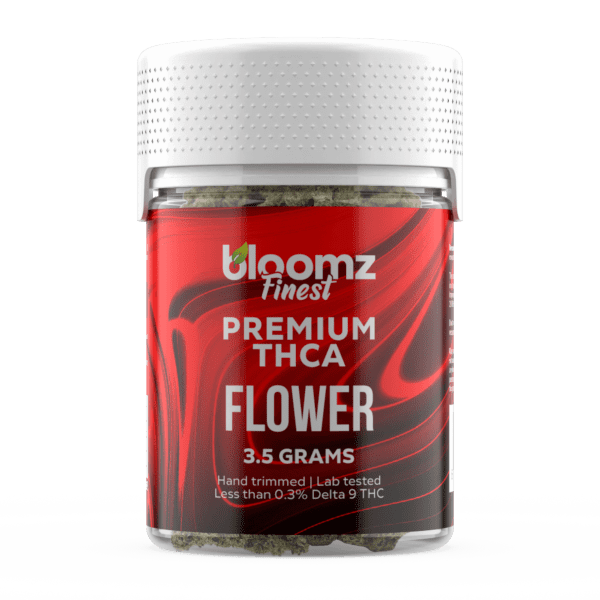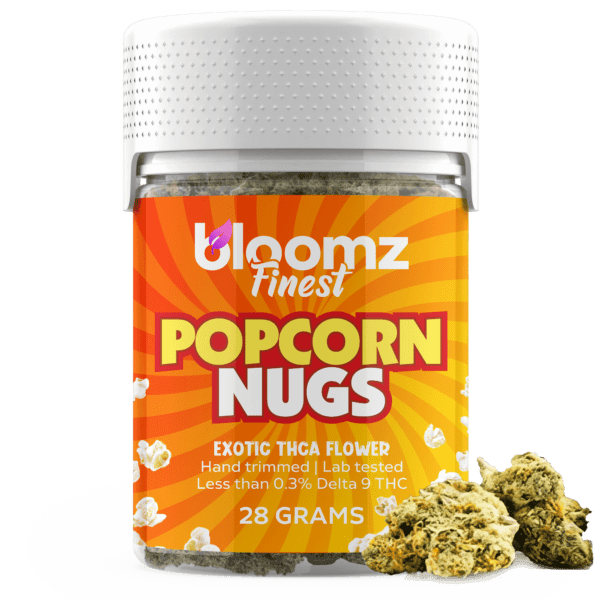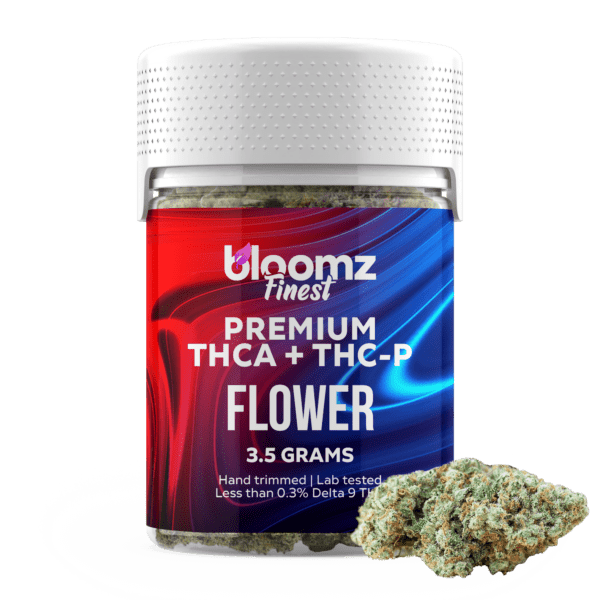There is a unique and quiet anticipation that settles in the moment you hold a perfectly crafted pre-roll. It represents a promise of a future experience, a moment of unwinding and bliss sealed within a delicate paper tube. This small, unassuming object is the culmination of careful cultivation, expert curing, and precise craftsmanship, all waiting for the right time to be enjoyed. But within that delicate construction lies a natural, living product subject to the same forces of time that affect all organic matter.
The vibrant compounds that give the pre-roll its distinct character are not immortal; they are in a constant, slow dance with their environment. Understanding the subtle timeline of a THCA Pre-Roll’s vitality is key to ensuring that when you finally choose to light it, you are experiencing it exactly as the cultivator intended—at its absolute peak of aromatic and potent perfection.
To Buy THCA Pre-Rolls Click Here
Recommended products
Unwrapping the Core Components – A Deeper Look at the THCA Pre-Roll
Before we can accurately chart the lifespan of a THCA pre-roll, it’s essential to understand its anatomy and the remarkable chemistry at play. A pre-roll is far more than just ground-up plant matter in a paper cone; it is a delivery system designed for a specific chemical transformation. The quality, freshness, and ultimate enjoyment of the experience hinge on the integrity of each of its components, from the star cannabinoid within the flower to the paper that envelops it.
THCA pre-rolls are ready-to-smoke joints filled with cannabis flower that’s rich in tetrahydrocannabinolic acid. You see, THCA is one of the many cannabinoids found naturally in the raw cannabis plant, and it’s particularly noteworthy because it’s the non-psychoactive precursor to Delta-9 THC, the compound most commonly associated with the traditional cannabis ‘high’. The magic happens through a process called decarboxylation, which occurs when you apply heat – like lighting the pre-roll. This heat converts the THCA into Delta-9 THC, unlocking the potential for those sought-after effects many consumers enjoy. Think of THCA as the potential energy, waiting for a spark to transform.
Now, the appeal of THCA pre-rolls, in general, lies in their sheer convenience. They eliminate the need for grinders, rolling papers, filters, and the skill (or patience) required to roll a consistent, even-burning joint. For both newcomers and seasoned users, grabbing a perfectly constructed pre-roll saves time and effort, making the experience more accessible and immediate. Essentially, it’s about having a top-tier, potent experience neatly packaged and ready to go, simplifying enjoyment without sacrificing the quality or intensity desired from premium cannabis flower.
Back to the science for a moment. In its raw, unheated state, the cannabis or hemp plant is teeming with THCA. This molecule features a distinct carboxylic acid group, often denoted as ‘-COOH’, attached to its chemical structure. This extra group is the sole reason why eating raw, high-THCA flower will not produce the characteristic euphoric effects associated with cannabis. The plant produces these cannabinoid acids as part of its natural life cycle, and it is only through human intervention, specifically the application of heat, that its more famous counterpart is revealed.
This brings us to the pivotal process of decarboxylation. This scientific-sounding term describes a simple, yet profound, chemical reaction that is fundamental to the pre-roll’s function. When you light the tip of the pre-roll, the heat from the flame initiates decarboxylation. This heat energy forces the THCA molecule to release its carboxyl group in the form of carbon dioxide (CO2) and water (H2O). Once this group is jettisoned, the molecule is transformed, or converted, into the celebrated Δ9-THC. This conversion happens almost instantaneously in the glowing cherry of the pre-roll, delivering the desired compounds through the inhaled smoke. Therefore, the THCA pre-rolls isn’t just a container; it’s a miniature, on-demand chemical reactor. The freshness of the pre-roll is paramount because it ensures there is a maximum amount of THCA available and ready for this critical transformation.
Beyond the flower and its chemical potential, the physical construction of the THCA pre-rolls plays a significant role in its overall quality and longevity. The rolling paper, or wrap, is the vessel. These come in a variety of materials, each offering a slightly different experience. Traditional wood pulp papers are common, but connoisseurs often gravitate towards options like ultra-thin rice paper, which is known for its slow burn and minimal impact on flavor, or unbleached hemp paper, which offers a congruent, plant-based vessel for the hemp flower inside. The quality of this paper affects not only the taste but also the durability of the pre-roll during storage. Finally, the filter, often called a crutch or tip, provides structural integrity, prevents loose flower from being inhaled, and helps to cool the smoke for a smoother draw. Each piece is integral to the whole, and the degradation of any single component can compromise the entire experience.
Mapping the Lifespan of the Flower
The most crucial factor determining how long a THCA pre-roll is “good for” is the freshness of the cannabis flower itself. The pre-roll is essentially a time capsule for the cannabinoids and terpenes harvested from the plant. While a well-made pre-roll stored in ideal conditions can remain viable for a considerable time, there is a definite window for peak performance. Generally speaking, a pre-roll is at its best within the first six months of its packaging. It can still be perfectly enjoyable for up to a year, but beyond that point, a noticeable decline in quality begins, even if it remains safe to consume.
What defines “freshness” in this context is a combination of potency, aroma, and flavor. These qualities are dictated by the presence and preservation of cannabinoids like THCA and aromatic compounds called terpenes. A fresh THCA pre-rolls will have a pungent, complex aroma that is true to its strain profile—perhaps notes of pine, citrus, earth, or fruit. The flower inside will have an ideal moisture content, making it slightly spongy to the touch and ensuring a slow, even burn. As the pre-roll ages, these desirable characteristics begin to fade due to a handful of environmental adversaries. To truly master the art of preservation, one must understand and defeat these natural enemies of freshness.
Oxygen: The Silent Oxidizer
Oxygen is essential for life, but it is a persistent enemy of cannabinoid stability. Through a process called oxidation, prolonged exposure to air causes the gradual breakdown of the complex molecules within the flower. THCA itself can degrade, but more importantly, any trace amounts of Δ9-THC that might have formed due to minor exposure to heat or light during processing will degrade further. The most common pathway for this degradation is the conversion of Δ9-THC into another cannabinoid called cannabinol, or CBN.
While not inherently harmful, CBN has a very different effect profile than Δ9-THC, often associated with a more lethargic or sleepy feeling. An old pre-roll, therefore, might not only be less potent but could also offer a completely different and less desirable experience than intended. This is why professional pre-rolls are almost always sold in airtight “doob tubes” or sealed packaging. Breaking that seal starts the clock on oxidation.
Light: The Potency Thief
Of all the environmental factors, light—specifically ultraviolet (UV) light from the sun—is the single most destructive force acting against cannabinoid preservation. UV rays are a form of high-energy radiation that bombards the flower’s delicate chemical structures, causing them to break down at an accelerated rate. This process, known as photodegradation, can slash the potency of a pre-roll in a remarkably short amount of time. Leaving a pre-roll on a sunny windowsill for even a few days can do more damage than months of storage in a dark drawer.
This is the same principle behind why many light-sensitive products, from beer to pharmaceuticals, are packaged in opaque or dark-colored containers like brown glass. The best storage for a THCA pre-roll is, therefore, a place devoid of light. The opaque tube it comes in is its first and most important line of defense against this potent threat.
Heat: The Hasty Degradant
Heat is another significant catalyst for degradation. Elevated temperatures accelerate the rate of all chemical reactions, including both oxidation and the slow, unintentional conversion of THCA into Δ9-THC. While you need a burst of high heat to decarboxylate the flower properly when smoking, slow and low ambient heat during storage is purely destructive. It can prematurely convert the very compound you’re trying to preserve, which then becomes more susceptible to degradation into CBN. Furthermore, heat wreaks havoc on the physical properties of the flower.
It dries out the natural oils and moisture, causing the terpenes to evaporate into the air. This results in a tragic loss of aroma and flavor. What was once a fragrant and tasty experience becomes bland, harsh, and acrid. A THCA Pre-Rolls stored in a hot car or a stuffy room will burn faster, hotter, and provide a much less pleasant sensation. The ideal storage temperature is cool and stable, typically below 70°F (21°C).
Humidity: The Delicate Balance
Humidity control is a fine art, as the integrity of the pre-roll can be compromised by both too much and too little moisture in the air.
When the relative humidity is too high (above 65%), it creates a breeding ground for the most dangerous threat to your THCA pre-rolls: mold and mildew. These fungal growths can appear as white, fuzzy patches or dark spots on the flower and paper. Inhaling mold spores can be hazardous, making a moldy pre-roll not just unpleasant but unsafe to consume. It will also have a musty, basement-like smell that is a clear indicator of spoilage.
Conversely, if the air is too dry, the flower inside the pre-roll will lose its essential moisture. It becomes brittle and crumbly, turning to dust with the slightest pressure. This extreme dryness causes the valuable terpenes to evaporate, stripping the pre-roll of its aromatic soul. When lit, an overly dry pre-roll will burn erratically and far too quickly, creating a hot, harsh smoke that offers none of the nuanced flavors it once held.
The sweet spot for long-term cannabis storage is a relative humidity between 58% and 62%. While a sealed pre-roll tube does a good job of maintaining the initial moisture level, once opened, it becomes susceptible to the ambient environment. For those serious about preservation, keeping pre-rolls in a humidor with a two-way humidity control pack can maintain this perfect balance indefinitely.
To summarize the sensory checks for a past-its-prime pre-roll, you can rely on your senses. A visual inspection might reveal discoloration, with the once-green flower turning brownish or yellow. A sniff test will be telling; if the vibrant, strain-specific scent has been replaced by the smell of dry hay or, worse, mustiness, it has lost its character. Finally, a gentle squeeze can reveal its state; if it feels overly brittle and crackly, it has likely dried out far beyond its peak.
Recommended products
-
THCA Flower – Indoor Exotics – Gold Line
$37.99$69.99 -
THCA Flower – Mystery Reserve
$41.99$79.99 -
THCA Flower – Platinum Line
$49.99$79.99 -
THCA Smalls
$149.99$256.99
Assessing the Durability of the Wrap and Filter
While the condition of the flower inside is the primary determinant of a pre-roll’s quality, the physical integrity of its container—the rolling paper and filter—is equally important for its usability. A THCA pre-rolls could contain the freshest, most aromatic flower on the planet, but if the wrap is torn or the structure is compromised, the experience is lost. The lifespan of these external components is largely a matter of their material composition and how they are handled and stored.
The rolling paper itself, while seemingly simple, is a product of sophisticated manufacturing. Different materials offer varying levels of durability.
Classic Wood Pulp Papers: These are the old standard. While effective, they can be somewhat susceptible to fluctuations in humidity. If they absorb too much moisture, they can become weak and difficult to light. If they become too dry, they can turn brittle, though this is less of a concern than with the flower inside. Bleached papers may also break down slightly faster over very long periods compared to their unbleached counterparts.
Refined Rice Papers: Valued by purists for their thinness and clean taste, rice papers are inherently more delicate. They are more prone to tearing if mishandled and can easily be ruined by a drop of water or excessive moisture in the air, which can cause them to practically dissolve. Their fragility means they demand careful handling and storage in a protective, rigid container.
Robust Hemp Wraps: A popular and fitting choice for a hemp-based product, papers made from hemp fiber are generally more robust and resilient. They have a slightly higher tolerance for minor humidity changes and are less prone to tearing than rice paper. Their durability makes them an excellent choice for pre-rolls intended to last, providing a sturdy and reliable vessel that honors the plant it contains.
Thicker Blunt Wraps: While traditional tobacco blunts are a different category, many modern THCA Pre-Rolls use thicker wraps made from hemp. These provide a very slow, even burn but are particularly susceptible to drying out. An old, dried-out hemp blunt wrap will crack and flake, making it impossible to smoke properly.
The greatest enemy of the pre-roll’s physical structure is the environment outside its protective tube. The “doob tube” that most pre-rolls are sold in is not just for branding; it is a vital piece of preservation hardware. It provides a crucial barrier against physical damage, preventing the pre-roll from being bent, crushed, or snapped in a pocket, purse, or backpack. It also offers a significant defense against humidity and moisture. A pre-roll left naked on a counter in a humid bathroom could become soggy and un-smokable in a matter of hours. Conversely, one left in a dry, air-conditioned room could become brittle. The tube mitigates these rapid changes.
The filter, or crutch, is the anchor of the pre-roll’s structure. Typically made from a small piece of rolled cardstock or a specialty material, its primary role is to provide a firm mouthpiece and prevent the end from collapsing. The filter material itself is quite stable and not prone to degradation from light or air. However, its structural integrity is entirely dependent on staying dry. If the pre-roll gets wet, the filter will absorb the moisture, become soggy, and lose all rigidity. This can clog the airway and cause the entire end to fall apart, rendering the pre-roll useless. Therefore, keeping the THCA Pre-Roll dry is just as important for its physical structure as it is for preventing mold on the flower.
Maximizing the Pre-Roll Experience
Finally, we arrive at the practical application: the session itself. The question of “how long it is good for” can also be interpreted as “how many sessions can I get from a single pre-roll?” The straightforward, purist answer is one. A THCA pre-roll is meticulously designed and intended to be consumed in a single, uninterrupted session, from the initial spark to the final draw. This is when the experience is at its zenith.
The first time you light a pre-roll, you are met with the pure, unadulterated flavor of the terpenes and the smooth effects of the freshly decarboxylated THCA. The burn is clean, the taste is vibrant, and the experience is precisely what the cultivator and manufacturer intended. When you choose to extinguish a pre-roll midway through with the intention of finishing it later, you fundamentally and irreversibly alter its nature. While it is certainly possible to re-light a pre-roll, it is a practice of diminishing returns, and the subsequent experience will be a pale imitation of the first.
Several factors contribute to this decline in quality upon re-lighting. The most significant is the dramatic degradation of flavor. When you extinguish the cherry, a sticky, dark residue of tar and resin immediately congeals and cools at the tip. When you re-light it, you are first and foremost burning through this concentrated, unpleasant-tasting buildup. The initial puffs will be acrid, harsh, and taste overwhelmingly of ash and stale smoke. All the subtle, delicious terpene notes are completely masked by this charred residue.
This leads directly to an increase in harshness. The smoke from a re-lit THCA Pre-Roll is hotter, denser, and far more irritating to the throat and lungs. The smooth, pleasant draw of the initial light is replaced by a cough-inducing, abrasive sensation. Furthermore, the delicate balance required for an even burn is thrown into disarray. An extinguished pre-roll rarely goes out perfectly evenly. Moisture from the air and the condensation of smoke can make one side slightly damper than the other. Upon re-lighting, this imbalance often leads to “canoeing,” where one side of the paper burns much faster than the other, wasting flower and creating a frustrating, uneven burn that requires constant correction.
The size of the pre-roll plays a crucial role in this dynamic. A standard one-gram pre-roll can often be more than enough for a solo user in a single sitting, making the temptation to save half for later very strong. This is where the industry has innovated to meet consumer needs. The rise of “minis” or “dogwalkers”—smaller pre-rolls typically containing between 0.3 and 0.5 grams of flower—is a direct response to this issue. These are perfectly portioned for a single, satisfying solo session, eliminating waste and the need to compromise quality by re-lighting. They ensure that every experience is a fresh one. Conversely, larger formats like king-size pre-rolls or multi-gram “cannons” are explicitly designed for sharing among a group, where they are far more likely to be consumed in one go.
If you absolutely must extinguish and re-light a THCA Pre-Roll there are best practices to mitigate the damage. Do not mash the cherry out as you would a cigarette. This grinds ash and tar into the remaining flower. Instead, gently snuff it out against a clean, non-flammable surface, or deprive it of oxygen to extinguish it gently. Before you re-light it, it’s wise to gently knock or scrape off the blackened, ashy tip. This removes some of the most concentrated, foul-tasting residue, which can make the first few puffs of the second session slightly more palatable. Finally, store the partially used pre-roll separately. Putting an ashy, half-smoked pre-roll back in its tube with fresh ones will make everything taste and smell like a dirty ashtray, ruining your entire supply.
Preserving the Promise of the Pre-Roll
Ultimately, a THCA pre-roll is more than a simple commodity; it is a carefully preserved snapshot of a plant’s peak potential, a fleeting moment of agricultural artistry ready to be released. To treat it with care is to honor the intricate process that brought it into being, from the seed in the soil to the final twist of the paper. Understanding its vulnerabilities to time, light, and the elements transforms the act of storage from a mundane task into a conscious act of preservation. By respecting its delicate nature, you ensure that the promise held within its slender form—the promise of flavor, aroma, and a blissful state of mind—is delivered in its full, untarnished glory, making every session a true and worthy experience.

